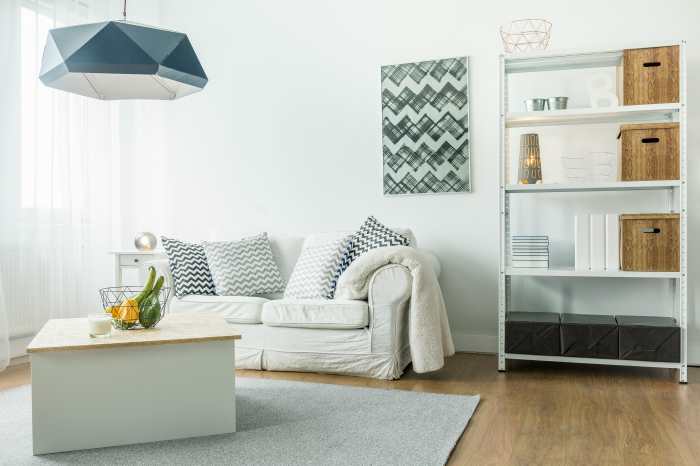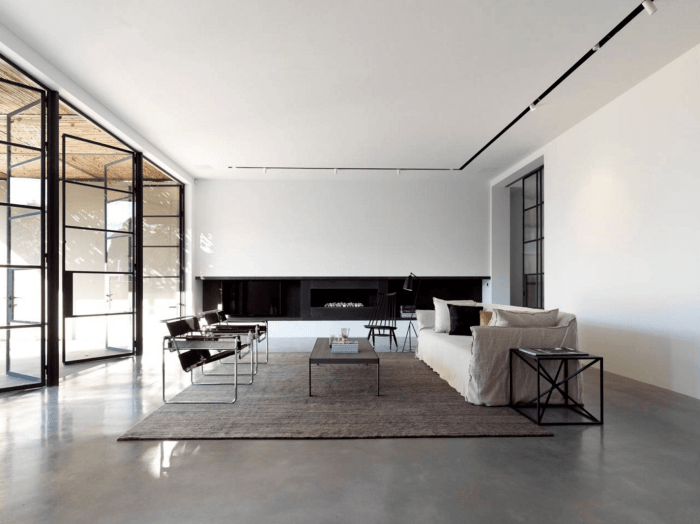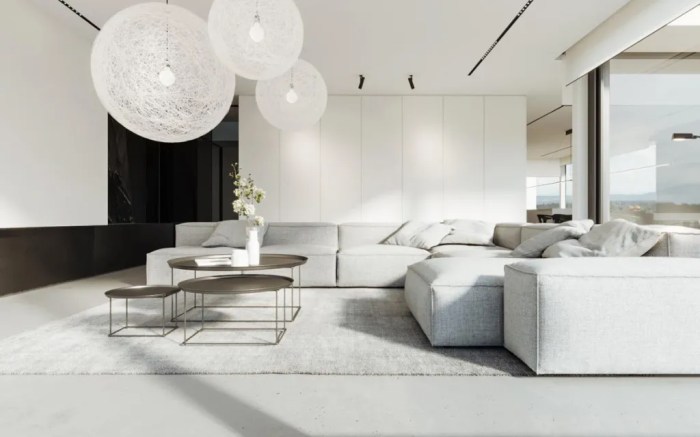Minimalist design, often perceived as stark or simplistic, is actually a sophisticated approach to aesthetics. It prioritizes functionality and intentionality, stripping away unnecessary elements to reveal the core essence of a design. This exploration of minimalist principles unveils how to achieve clean, impactful aesthetics across various design disciplines, from web design to interior spaces. We’ll delve into the core tenets, practical application, and the psychology behind creating truly minimalist designs.
Understanding the nuances of minimalism means differentiating it from similar styles like Scandinavian or Japanese design. While sharing some common ground, each possesses unique characteristics. This guide will clarify these differences and equip you with the knowledge to confidently apply minimalist principles to your own projects. We’ll explore the power of negative space, color psychology, and material selection in achieving a cohesive and visually stunning minimalist outcome.
Understanding Minimalist Design Principles

Minimalist design is more than just a trend; it’s a philosophy that prioritizes simplicity, functionality, and intentionality in creating visually appealing and user-friendly designs. It’s about stripping away the unnecessary to reveal the essence of a design, resulting in a clean, uncluttered aesthetic that is both calming and impactful.
Minimalism emphasizes the power of less. It’s about carefully selecting each element, ensuring that every detail serves a purpose and contributes to the overall design’s effectiveness. This approach demands a high level of intentionality, as the absence of clutter requires careful consideration of what is included and, crucially, what is excluded. The resulting designs are often characterized by their clean lines, neutral color palettes, and a focus on negative space.
Examples of Minimalist Design Across Disciplines
Minimalism manifests in diverse fields, each adapting the core principles to its specific context. In architecture, minimalist buildings often feature clean lines, open spaces, and a focus on natural light, exemplified by the works of architects like Tadao Ando, known for his concrete structures and emphasis on simplicity. Graphic design embraces minimalism through clean typography, limited color palettes, and a focus on impactful imagery, evident in the logo designs of many tech companies. Interior design utilizes minimalist principles to create calm and functional spaces, often incorporating natural materials and neutral colors, resulting in rooms that feel both spacious and inviting. For instance, the use of a single statement piece of furniture against a neutral backdrop is a hallmark of minimalist interior design.
A Minimalist Mood Board: A Textual Description
Imagine a mood board dominated by a soft, off-white background. A single, high-quality photograph of a sparsely furnished room with natural light streaming in occupies a significant portion of the board. The furniture is simple and functional—a sleek wooden table, a couple of comfortable, unadorned chairs. A small, carefully chosen piece of artwork, perhaps a simple line drawing or abstract painting in muted tones, hangs on the wall. The overall palette is restricted to shades of white, beige, and gray, with a single accent color—a muted teal, perhaps—introduced subtly. A few carefully chosen textures are represented: the smooth surface of the table, the woven texture of a simple rug, the rough texture of the concrete floor. The overall feeling is one of calm, serenity, and understated elegance.
Distinguishing Minimalism from Other Design Styles
While minimalism shares similarities with other design styles emphasizing simplicity, key distinctions exist. Scandinavian design, for instance, although often minimalist in its aesthetic, frequently incorporates natural materials like wood and incorporates warmer, brighter colors than are typically found in minimalist design. Japanese design, with its focus on wabi-sabi (the beauty of imperfection) and natural elements, shares the minimalist emphasis on simplicity but often incorporates more texture and a sense of history and tradition. Minimalism, in contrast, is a more purist approach, striving for absolute simplicity and functionality, often devoid of overt ornamentation or cultural references.
Implementing Minimalist Design in 5 Key Areas

Minimalist design isn’t about deprivation; it’s about intentionality. By carefully selecting essential elements and eliminating the superfluous, we create designs that are clean, impactful, and ultimately, more effective. This section will explore five key areas where minimalist principles can be powerfully applied, transforming projects from cluttered to compelling. We’ll provide practical tips and a step-by-step guide to help you achieve a minimalist aesthetic in your own work.
Applying minimalist principles effectively requires a strategic approach across various design aspects. Whether you’re designing a website, a room, or a logo, the core tenets remain the same: prioritize functionality, reduce visual noise, and emphasize negative space. This will lead to a more focused and impactful final product.
Five Practical Tips for Applying Minimalist Principles
The following table Artikels five practical tips for implementing minimalist design, providing examples and highlighting the benefits of each approach. These tips are applicable across various design disciplines, from web design to interior design.
| Tip | Description | Example | Benefit |
|---|---|---|---|
| Prioritize Functionality | Focus on the core purpose of the design and eliminate anything that doesn’t directly contribute to it. | A website with clear navigation and concise content, devoid of unnecessary animations or distracting elements. | Improved user experience and clarity of message. |
| Limit Your Color Palette | Restrict the number of colors used to a maximum of three, ideally using variations of a single hue or complementary colors. | A logo design utilizing only black, white, and a single accent color, creating a unified and sophisticated look. | Enhanced visual harmony and a stronger brand identity. |
| Use Simple Typography | Choose one or two legible fonts, avoiding excessive variations in style or size. | A website using a clean sans-serif font for body text and a slightly bolder version for headings. | Improved readability and a more professional appearance. |
| Embrace Negative Space | Leave ample white space (or the background color) around elements to allow them to breathe and avoid visual clutter. | A poster with a single, powerful image surrounded by significant white space, drawing attention to the focal point. | Increased visual impact and improved readability. |
| Focus on High-Quality Materials | Use high-resolution images, premium textures, and durable materials to enhance the overall quality and perception of the design. | A room designed with natural wood flooring, simple furniture made of quality materials, and a few carefully selected accessories. | A feeling of luxury and sophistication; improved longevity of the design. |
Decluttering and Organizing a Space for a Minimalist Look
Achieving a minimalist aesthetic in a physical space requires a systematic approach to decluttering and organizing. The following steps provide a structured method for transforming a cluttered space into a clean, calming environment.
- Purge Unnecessary Items: Begin by removing anything you don’t use, need, or love. Be ruthless and honest with yourself about what truly adds value to your life.
- Categorize and Consolidate: Group similar items together and find ways to consolidate them. For example, combine multiple small containers into one larger, more efficient storage solution.
- Optimize Storage Solutions: Invest in storage solutions that maximize space and keep items organized. This could include drawers, shelves, baskets, or other containers.
- Strategically Place Items: Place frequently used items in easily accessible locations, while less frequently used items can be stored out of sight.
- Maintain Regular Cleaning and Organization: Regularly declutter and clean to prevent the accumulation of unnecessary items and maintain the minimalist aesthetic.
The Importance of Negative Space
Negative space, also known as white space, is the area surrounding design elements. It’s not empty; it’s a crucial component that provides visual breathing room, improves readability, and enhances the overall impact of a design. Effective use of negative space allows elements to stand out, prevents visual clutter, and creates a sense of balance and sophistication. For example, a logo with ample negative space around its central image will appear more refined and memorable than one crammed with details. Similarly, a website with generous margins and spacing between elements will be easier to navigate and more visually appealing.
Choosing a Minimalist Color Palette and Materials

Minimalist design thrives on simplicity and intentionality, and this extends to the careful selection of color palettes and materials. The choices made in these areas significantly impact the overall mood, feel, and visual impact of the design. Understanding the psychology of color and the properties of different materials is crucial for achieving a truly effective minimalist aesthetic.
The psychology of color plays a significant role in shaping the perception of a space. Cool colors like blues and greens often evoke feelings of calmness and serenity, while warmer tones such as yellows and oranges can create a sense of energy and warmth. Neutrals, such as whites, grays, and beiges, provide a clean and versatile backdrop, allowing other design elements to stand out. In minimalist design, the strategic use of color enhances the overall sense of space and tranquility, avoiding visual clutter and promoting a sense of peace.
Versatile Minimalist Color Palettes
Effective minimalist color palettes typically feature a limited number of colors, often focusing on a neutral base with one or two accent colors. Overusing colors detracts from the clean lines and simplicity that define the style. Here are three commonly used palettes:
- Monochromatic Palette: This palette uses variations of a single color, creating a cohesive and harmonious look. For example, different shades of gray, from light to dark, can create depth and visual interest without being overwhelming. This approach provides a sophisticated and elegant feel.
- Neutral Palette: This palette utilizes a combination of whites, grays, beiges, and blacks. It’s incredibly versatile and provides a clean, uncluttered backdrop that allows other design elements, such as textures and shapes, to take center stage. This palette is incredibly adaptable to different styles within minimalism.
- Accent Color Palette: This palette uses a neutral base (like the neutral palette above) and introduces one or two accent colors for pops of visual interest. For instance, a neutral palette could be enhanced with a deep teal or a muted olive green to add a touch of nature or sophistication without disrupting the overall minimalist aesthetic. The accent color is carefully chosen to complement the neutrals, not compete with them.
Natural and Sustainable Materials in Minimalist Design
Minimalist design often emphasizes the use of natural and sustainable materials. These materials contribute to the overall sense of calm and well-being, while also aligning with environmentally conscious design principles.
- Wood: The natural grain and warmth of wood add texture and visual interest to a minimalist space. Light-colored woods, such as ash or birch, are particularly popular, contributing to a bright and airy feel. Darker woods can be used strategically to add contrast and depth.
- Stone: Natural stone, such as marble or slate, brings a sense of elegance and permanence to a design. Its cool tones and unique textures create a sophisticated and calming atmosphere. The use of stone should be carefully considered to avoid overwhelming the minimalist aesthetic.
- Bamboo: A sustainable and rapidly renewable resource, bamboo offers a lightweight yet durable alternative to traditional materials. Its natural color and texture bring a touch of organic warmth to a minimalist design.
- Cotton and Linen: These natural fibers are frequently used in textiles, providing a soft and comfortable texture that complements the clean lines of minimalist furniture and decor. Their breathability and natural feel contribute to a relaxed and inviting atmosphere.
Creating a Visually Appealing and Balanced Composition
Achieving visual balance in minimalist design is about strategic placement and thoughtful selection of elements. A limited color palette and a small number of materials are key to avoiding visual clutter. The layout should be clean and uncluttered, with a clear visual hierarchy.
Consider a living room example: A neutral-toned sofa in linen fabric could be placed against a wall painted in a light gray. A low-profile coffee table made of light-colored wood, perhaps with a simple stone or glass top, could be positioned in front of the sofa. A single, large piece of artwork, perhaps a minimalist print or photograph, could be hung above the sofa, acting as a focal point. The overall effect would be a calm, uncluttered space with a clear visual hierarchy, where the sofa and artwork are the dominant elements. The limited color palette and materials create a sense of harmony and balance, highlighting the beauty of simplicity.
Outcome Summary

Mastering minimalist design isn’t about deprivation; it’s about intention. By understanding the underlying principles of simplicity, functionality, and intentionality, you can create designs that are both visually appealing and deeply meaningful. The five key areas explored—from decluttering techniques to strategic color palette selection—provide a practical framework for transforming any project into a minimalist masterpiece. Remember, the beauty of minimalism lies in its ability to convey more with less, resulting in designs that are both elegant and enduring.